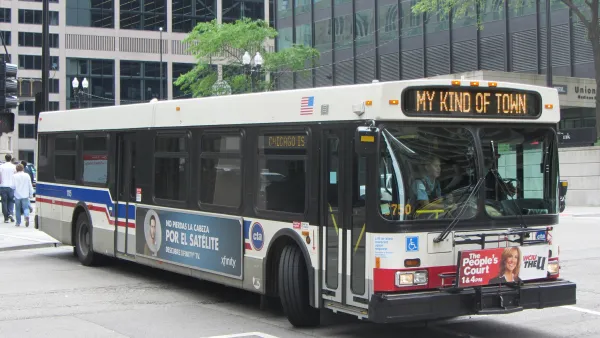Bus rapid transit (BRT) is well known among planners as a cheap method to improve bus service and provide an alternative to rail, but BRT projects around the country have met resistance from an array of status quo interests.
Yonah Freemark argues in favor of a more widespread adoption of bus rapid transit (BRT). “With projects like BRT, we have an opportunity to play to the great advantages of dense, urban environments, where transit is truly effective in connecting people to jobs and other needs, if given the chance to thrive.”
Freemark details the benefits of removing bus traffic from automobile traffic, and cites the successes of BRT projects. For example, “in city after city, BRT services have indeed increased ridership,” and “businesses fearful of fewer cars driving down streets with BRT should comfort themselves with the fact that more transit users typically means more economic activity, not less.”
Freemark drills a little deeper on the example of Chicago’s BRT line on Ashland Avenue: “For people living near several stations, the number of jobs accessible within a 20-minute transit commute would increase by more than 80 percent. The line itself would increase the number of people living and working within a quarter mile of a rapid transit station by 80,000 and 25,000, respectively.”
FULL STORY: Why More U.S. Cities Need to Embrace Bus-Rapid Transit

National Parks Layoffs Will Cause Communities to Lose Billions
Thousands of essential park workers were laid off this week, just before the busy spring break season.

Retro-silient?: America’s First “Eco-burb,” The Woodlands Turns 50
A master-planned community north of Houston offers lessons on green infrastructure and resilient design, but falls short of its founder’s lofty affordability and walkability goals.

Delivering for America Plan Will Downgrade Mail Service in at Least 49.5 Percent of Zip Codes
Republican and Democrat lawmakers criticize the plan for its disproportionate negative impact on rural communities.

Test News Post 1
This is a summary

Test News Headline 46
Test for the image on the front page.

Balancing Bombs and Butterflies: How the National Guard Protects a Rare Species
The National Guard at Fort Indiantown Gap uses GIS technology and land management strategies to balance military training with conservation efforts, ensuring the survival of the rare eastern regal fritillary butterfly.
Urban Design for Planners 1: Software Tools
This six-course series explores essential urban design concepts using open source software and equips planners with the tools they need to participate fully in the urban design process.
Planning for Universal Design
Learn the tools for implementing Universal Design in planning regulations.
EMC Planning Group, Inc.
Planetizen
Planetizen
Mpact (formerly Rail~Volution)
Great Falls Development Authority, Inc.
HUDs Office of Policy Development and Research
NYU Wagner Graduate School of Public Service




























